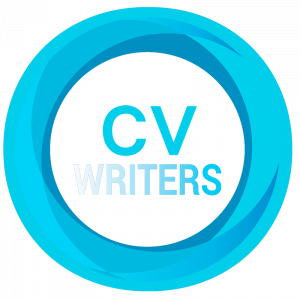
Introduction
The purpose of the cover letter is to get your CV or resume elevated to the top of applicants. However, it is difficult to inspire interest when your letter is like the other 50 in the pile; repetitive, copied and pasted, and unconvincing.
Great cover letter writing will set you apart, while poor cover letters may make you look uninspiring and lazy.
They are are a critical part of selling yourself in a job application and form part of your first impression. They must clearly showcase why you are perfect for the job.
To avoid the top 5 mistakes in cover letter writing and to write the best cover letter, read on.
Mistake 1: It is not a synopsis of your CV or resume
A cover letter is not a summary of your CV or resume. It is your opportunity to tease the reader with some bold statements that entice them to open your CV and read more. Use your cover letter to show the hiring manager or recruiter your enthusiasm, personality and why you are worthy of further attention.
Tick the boxes of what they’re looking for, but value capturing their interest, over lengthy descriptions of your experience.
Mistake 2: You didn’t do enough research.
Do your research on the organisation and add in a fact or two about recent changes, accomplishments, culture or recognition they have received.
Don’t say “I want to work for a top manufacturing company”, instead say “I’ve noticed your new product range and expansion into China, and I would love to be part of that growth and success story”. Or “Congratulations on your recent industry award, great to see you are recognised for innovative thinking.
Mistake 3: Get to the point
Imagine being a recruiter with 50 CVs that need to be screened in the next 30 minutes. When going through the CVs, they come across a 2-page cover letter with blocks of paragraphs. Do you think they will dedicate the time to read the whole 2-page cover letter? Speed is of the essence in recruitment so probably not. Then they come to a one-page cover letter with lots of white space that looks easy to scan and digest. Will they read this one? That’s much more likely.
So, keep your cover letters to one page (or shorter), that is well-spaced out with easy-to-scan bullet points, lots of white space and eye-catching headings. Cover letters are scanned quickly. If you make it easy to read, they may invest more time.
Your letter needs to read well, but don’t waste time on fluff or stuffy, formal letter writing structures that are outdated and unnecessary. Get to the point.
Mistake 4: Being lazy and sending a generic letter
Always tailor your letter to the company and the role. Always always always.
Re-write. Edit. Customise. Ideally, include the hiring manager’s name if you can. Make a phone call and try to find out whom to address the letter to.
People spend less time reading letters addressed “To Whom It May Concern” or “Dear Sir/Madam” than one addressed to themselves or a colleague.
Flicking out applications left, right and centre will only work if you are sending out quality applications.
Mistake 5: Can you spell?
Proofread, proofread, proofread. A cover letter with grammatical and spelling mistakes screams unprofessionalism, a lack of attention to detail, carelessness and poor communication skills. It’s seriously that bad.
So, take the time to keep reviewing your cover letter, line by line, word by word, until you find nothing that needs to be changed.
The free Grammarly app is an excellent tool for spelling and grammar reviews. Plus you need to make sure you customise your language preferences and spelling to suit your target location – e.g. US vs. UK English.
Once you have hit the point where you can’t find anything to fix, give it to someone else to thoroughly review as well. Ideally, this person has strong attention to detail, excellent literacy skills and gets truly upset if they see a missing full stop or spelling mistake.
Poorly written letters with typos are not going to get you a call-back.
Components of the best cover letter template
1. Introductory Paragraph
Introduce yourself and match your job title with the advertised one (if possible). Use your key Personal Value Proposition to show why you are a strong candidate. Read our blog on How to Create Your Personal Value Proposition for a simple framework on how to create these powerful statements.
2. Address Selection Criteria
Show your experience and achievements related to their top 4-5 selection criteria. Ideally, keep your answers to 2-3 sentences per criteria. This part needs to be customised for each cover letter.
3. Weaknesses
Shortlisting CVs is about risk management. The first step is to eliminate anyone that cannot meet the selection criteria or has an unusual work history. For example, gaps in your employment or lack of industry experience. Talk about the elephant in the room and address any obvious concerns in your cover letter, otherwise, your CV may quickly get relegated to the rejection pile.
4. Motivation
Tell them why they’re awesome and why you want to work for them. Frame it in a way that shows the value you bring to the table.
5. Availability & Close
Inform them when you can start and your relocation plan (if applicable). Reinforce your motivation and thank them for the opportunity. Leave your contact details.
How long should a cover letter be?
Cover Letters should be one page and Selection Criteria can be 2-3 pages. Make the margins smaller and font 10 size if you need to. Never go over any specified word/page limit.
When (and when not) to send a cover letter:
Agencies – NO
Unless a recruitment agency requests it, you don’t need to send a cover letter. Recruiters are only interested in your CV because that is what will win an interview. After your CV is shortlisted, you may be asked to prepare selection criteria which they will submit with your CV to the client.
Employers – YES
If the employer is adverIntroductiontising a vacancy, then you’re expected to send a personalised cover letter that addresses the selection criteria (in the ad) and tells them why you will accept this role. You need to spend time personalising each cover letter. Usually one page long.
Public sector – MAYBE
Public sector organisations often request Selection Criteria instead of a cover letter. These are an important component of your application and need to be taken seriously. Usually 2-3 pages long.
How much do I need to brag?
A contentious issue. For my opinion on treading the fine line between positive self-promotion and arrogance, check out my blog “Selling Yourself & The Art Of Bragging“.
Need some help?
If you would like to find out how your cover letter and CV can be elevated to the top of applications, book a free 20-min, no strings attached coaching session here. Our cover letter and CV review sessions are recorded and sent to you after that call so you can take your time making the recommended changes.
